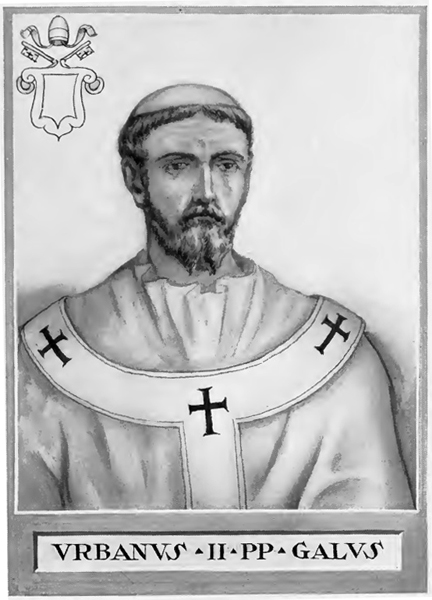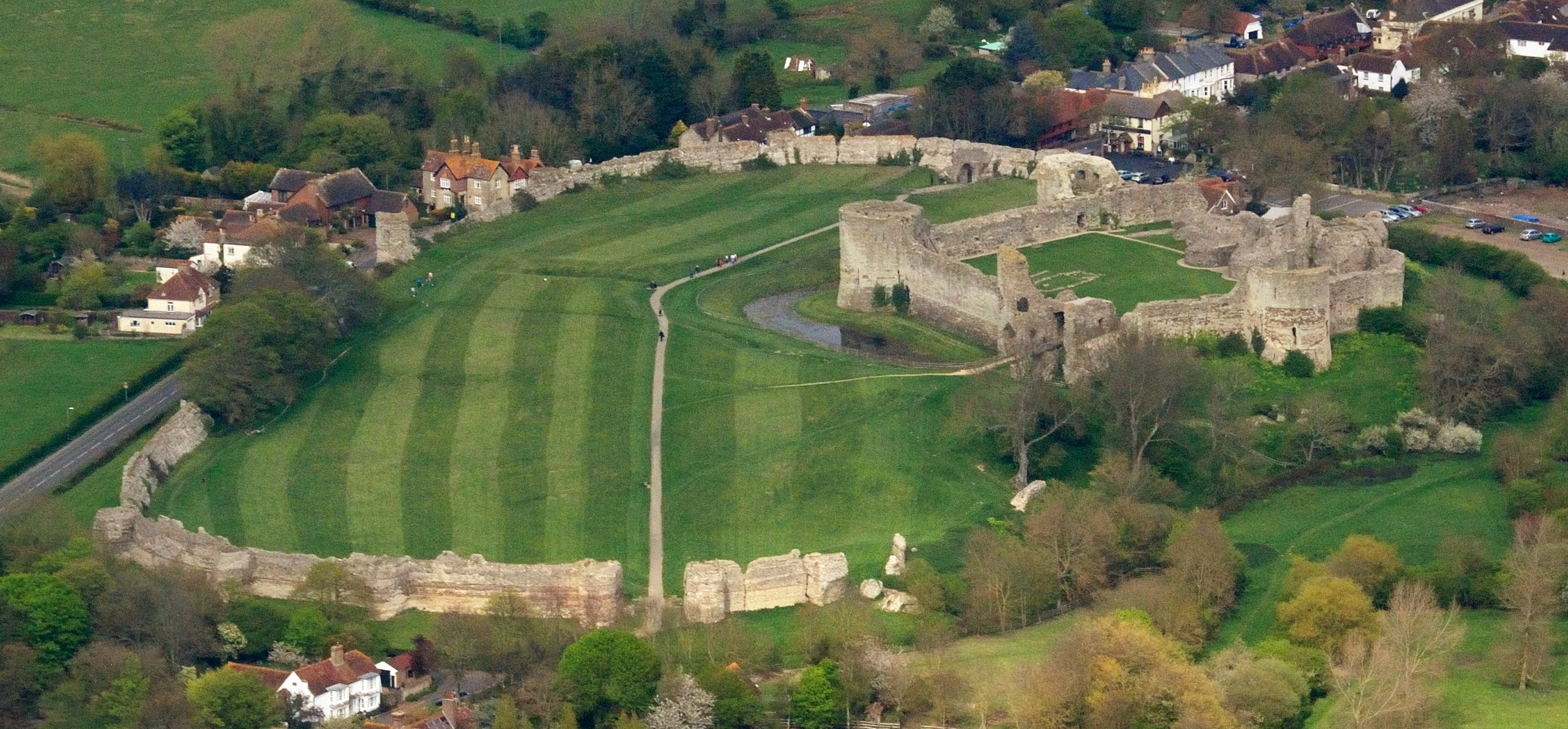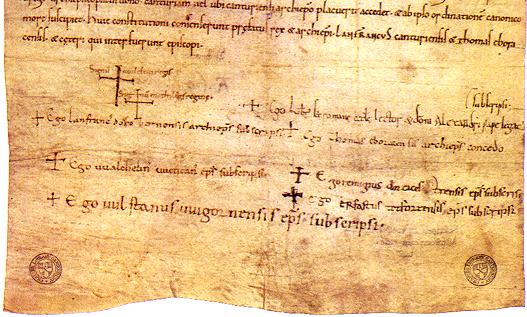|
1088
Year 1088 ( MLXXXVIII) was a leap year starting on Saturday (link will display the full calendar) of the Julian calendar. Events By place Europe * Almoravid forces (supported with fighters from local Andalusian provinces), under Sultan Yusuf ibn Tashfin, besiege Aledo, but are forced to retreat, by the arrival of Spanish troops of King Alfonso VI (the Brave) of Castile. * Catalonian troops, under Count Berenguer Ramon II, reconquer Tarragona (lost again in 1108). He will rule Catalonia with his 6-year-old nephew Ramon Berenguer III, until he comes of age. England * Spring – A rebellion led by William the Conqueror's half-brothers Odo of Bayeux and Robert (2nd Earl of Cornwall), begins against King William II with the aim to remove him from the throne. Odo's revolt in Kent and Sussex is supported by nobles across the country. * The Worcestershire rebellion led by Robert de Lacy (a son of Ilbert de Lacy) is dealt with quickly by Wulfstan, bishop of Worces ... [...More Info...] [...Related Items...] OR: [Wikipedia] [Google] [Baidu] |
Rebellion Of 1088
The Rebellion of 1088 occurred after the death of William the Conqueror and concerned the division of lands in the Kingdom of England and the Duchy of Normandy between his two sons William Rufus and Robert Curthose. Hostilities lasted from 3 to 6 months starting around Easter of 1088. Background William on his deathbed in 1087 decided how his sons would inherit the lands of his native Normandy and recently conquered England. His eldest son Robert was made Duke of Normandy and his third eldest son (second eldest surviving son) William Rufus was made King of England. This came to pass on William's death. The division of William the Conqueror's lands into two parts presented a dilemma for those nobles who held land on both sides of the English Channel. Since the younger William and his brother Robert were natural rivals, these nobles worried that they could not hope to please both of their lords, and thus ran the risk of losing the favour of one ruler or the other, or both. The ... [...More Info...] [...Related Items...] OR: [Wikipedia] [Google] [Baidu] |
Pevensey Castle
Pevensey Castle is a Middle Ages, medieval castle and former Roman Britain, Roman Saxon Shore fort at Pevensey in the English county of East Sussex. The site is a scheduled monument in the care of English Heritage and is open to visitors. Built around 290 AD and known to the Romans as ''Anderitum'', the fort appears to have been the base for a fleet called the ''Classis Anderidaensis''. The reasons for its construction are unclear; long thought to have been part of a Roman defensive system to guard the British and Gaul, Gallic coasts against Saxon pirates, it has more recently been suggested that ''Anderitum'' and the other Saxon Shore forts were built by a usurper in an ultimately unsuccessful attempt to prevent Rome from reimposing its control over Britain. ''Anderitum'' fell into ruin following the end of the Roman Britain, Roman occupation but was reoccupied in 1066 by the Normans, for whom it became a key strategic bulwark. A stone keep and fortification was built within th ... [...More Info...] [...Related Items...] OR: [Wikipedia] [Google] [Baidu] |
Lanfranc
Lanfranc, OSB (1005 1010 – 24 May 1089) was a celebrated Italian jurist who renounced his career to become a Benedictine monk at Bec in Normandy. He served successively as prior of Bec Abbey and abbot of St Stephen in Normandy and then as Archbishop of Canterbury in England, following its Conquest by William the Conqueror. He is also variously known as ( it, Lanfranco di Pavia), (french: Lanfranc du Bec), and ( la, Lanfrancus Cantuariensis). Early life Lanfranc was born in the early years of the 11th century at Pavia, where later tradition held that his father, Hanbald, held a rank broadly equivalent to magistrate. He was orphaned at an early age. Lanfranc was trained in the liberal arts, at that time a field in which northern Italy was famous (there is little or no evidence to support the myth that his education included much in the way of Civil Law, and none that links him with Irnerius of Bologna as a pioneer in the renaissance of its study). For unknown reasons ... [...More Info...] [...Related Items...] OR: [Wikipedia] [Google] [Baidu] |
Odo Of Bayeux
Odo of Bayeux (died 1097), Earl of Kent and Bishop of Bayeux, was the maternal half-brother of William the Conqueror, and was, for a time, second in power after the King of England. Early life Odo was the son of William the Conqueror's mother Herleva and Herluin de Conteville. Count Robert of Mortain was his younger brother. There is uncertainty about his birth date. Some historians have suggested he was born around 1035. Duke William made him bishop of Bayeux in 1049. It has been suggested that his birth was as early as 1030, making him about nineteen rather than fourteen at the time. Norman Conquest and after Although Odo was an ordained Christian cleric, he is best known as a warrior and statesman, participating in the Council of Lillebonne. He funded ships for the Norman invasion of England and is one of the very few proven companions of William the Conqueror known to have fought at the Battle of Hastings in 1066. The Bayeux Tapestry, probably commissioned by him to adorn ... [...More Info...] [...Related Items...] OR: [Wikipedia] [Google] [Baidu] |
William The Conqueror
William I; ang, WillelmI (Bates ''William the Conqueror'' p. 33– 9 September 1087), usually known as William the Conqueror and sometimes William the Bastard, was the first House of Normandy, Norman List of English monarchs#House of Normandy, king of England, reigning from 1066 until his death in 1087. A descendant of Rollo, he was Duke of Normandy from 1035 onward. By 1060, following a long struggle to establish his throne, his hold on Normandy was secure. In 1066, following the death of Edward the Confessor, William invaded England, leading an army of Normans to victory over the Anglo-Saxons, Anglo-Saxon forces of Harold Godwinson at the Battle of Hastings, and suppressed subsequent English revolts in what has become known as the Norman Conquest. The rest of his life was marked by struggles to consolidate his hold over England and his continental lands, and by difficulties with his eldest son, Robert Curthose. William was the son of the unmarried Duke Robert I of Normandy ... [...More Info...] [...Related Items...] OR: [Wikipedia] [Google] [Baidu] |
De Lacy
de Lacy (Laci, Lacie, Lascy, Lacey, Lassey) is the surname of an old Norman family which originated from Lassy, Calvados. The family took part in the Norman Conquest of England and the later Norman invasion of Ireland. The name is first recorded for Hugh de Lacy (1020–1085). His sons, Walter and Ilbert, left Normandy and travelled to England with William the Conqueror. The awards of land by the Conqueror to the de Lacy sons led to two distinct branches of the family: the northern branch, centred on Blackburnshire and west Yorkshire was held by Ilbert's descendants; the southern branch of Marcher Lords, centred on Herefordshire and Shropshire, was held by Walter's descendants. Until 1361, the northern branch of the family held the great Lordship of Bowland before it passed through marriage to the Duchy of Lancaster. They were also Barons of Pontefract and later (via two female lines) Earls of Lincoln. The southern branch of the family became substantial landholders in the Lord ... [...More Info...] [...Related Items...] OR: [Wikipedia] [Google] [Baidu] |
Robert, Count Of Mortain
Robert, Count of Mortain, 2nd Earl of Cornwall (–) was a Norman nobleman and the half-brother (on their mother's side) of King William the Conqueror. He was one of the very few proven companions of William the Conqueror at the Battle of Hastings and as recorded in the Domesday Book of 1086 was one of the greatest landholders in his half-brother's new Kingdom of England. Life Robert was the son of Herluin de Conteville and Herleva of Falaise and brother of Odo of Bayeux.Detlev Schwennicke, ''Europäische Stammtafeln: Stammtafeln zur Geschichte der Europäischen Staaten'', Neue Folge, Band III Teilband 4 (Marburg, Germany: Verlag von J. A. Stargardt, 1989), Tafel 694B Robert was born in Normandy, a half-brother of William the Conqueror. and was probably not more than a year or so younger than his brother Odo, born . About 1035, Herluin, as Vicomte of Conteville, along with his wife Herleva and Robert, founded Grestain Abbey. Count of Mortain Around 1049 his brother Duke Willia ... [...More Info...] [...Related Items...] OR: [Wikipedia] [Google] [Baidu] |
William II Of England
William II ( xno, Williame; – 2 August 1100) was King of England from 26 September 1087 until his death in 1100, with powers over Normandy and influence in Scotland. He was less successful in extending control into Wales. The third son of William the Conqueror, he is commonly referred to as William Rufus ( being Latin for "the Red"), perhaps because of his ruddy appearance or, more likely, due to having red hair as a child that grew out in later life. William was a figure of complex temperament, capable of both bellicosity and flamboyance. He did not marry nor have children, which – along with contemporary accounts – has led historians to speculate on homosexuality or bisexuality. He died after being hit by an arrow while hunting, under circumstances that remain unclear. Circumstantial evidence in the behaviour of those around him raises strong, but unproven, suspicions of murder. His younger brother Henry I hurriedly succeeded him as king. Historian Frank Barlow ... [...More Info...] [...Related Items...] OR: [Wikipedia] [Google] [Baidu] |
Earl Of Cornwall
The title of Earl of Cornwall was created several times in the Peerage of England before 1337, when it was superseded by the title Duke of Cornwall, which became attached to heirs-apparent to the throne. Condor of Cornwall *Condor of Cornwall, probably legendary Earl of Cornwall before the Conquest, said to have paid homage to William for the Earldom Earls of Cornwall, 1st creation (1068) *Brian of Brittany (c. 1040–1084 or 85), resigned c. 1072 Earls of Cornwall, 2nd creation (c. 1072) *Robert, Count of Mortain (c. 1038–1095), half-brother of William the Conqueror *William, Count of Mortain (1084–1140), peerage forfeit 1106 Cadoc II of Cornwall (c. 1106) *Cadoc II (or Candor), son of Cadoc of Cornwall Earls of Cornwall, 1st creation (revived 1140) *Alan, 1st Earl of Richmond, Alan (died 1146), nephew of Brian, deprived 1141 Earls of Cornwall, 3rd creation (1141) * Reginald de Dunstanville, Earl of Cornwall (died 1175), illegitimate son of King Henry I of England Earl ... [...More Info...] [...Related Items...] OR: [Wikipedia] [Google] [Baidu] |
Diocese Of Canterbury
The Diocese of Canterbury is a Church of England diocese covering eastern Kent which was founded by St. Augustine of Canterbury in 597. The diocese is centred on Canterbury Cathedral and is the oldest see of the Church of England. The ''Report of the Commissioners appointed by his Majesty to inquire into the Ecclesiastical Revenues of England and Wales'' (1835) noted the net annual revenue for the Canterbury see was £19,182. This made it the wealthiest diocese in England. Bishops The diocesan bishop is the Archbishop of Canterbury, presently Justin Welby. However, because of his roles as metropolitan bishop of the Province of Canterbury, Primate of All England and "first bishop" of the worldwide Anglican Communion, the archbishop (whose primary residence is at Lambeth Palace in London) is often away from the diocese. Therefore, his suffragan bishop, the Bishop of Dover (presently Rose Hudson-Wilkin), is in many ways empowered to act almost as if she were the diocesan bishop. T ... [...More Info...] [...Related Items...] OR: [Wikipedia] [Google] [Baidu] |
Leap Year Starting On Saturday
A leap year starting on Saturday is any year with 366 days (i.e. it includes 29 February) that begins on Saturday, 1 January, and ends on Sunday, 31 December. Its dominical letters hence are BA. The most recent year of such kind was 2000 and the next one will be 2028 in the Gregorian calendar or, likewise 2012 and 2040 in the obsolescent Julian calendar. In the Gregorian calendar, years divisible by 400 are always leap years starting on Saturday. The most recent such occurrence was 2000 and the next one will be 2400, see below for more. Any leap year that starts on Tuesday, Friday or Saturday has only one Friday the 13th: the only one in this leap year occurs in October. Common years starting on Sunday share this characteristic, but also have another in January. From August of the common year preceding that year until October in this type of year is also the longest period (14 months) that occurs without a Friday the 13th. Common years starting on Tuesday share this char ... [...More Info...] [...Related Items...] OR: [Wikipedia] [Google] [Baidu] |
London
London is the capital and largest city of England and the United Kingdom, with a population of just under 9 million. It stands on the River Thames in south-east England at the head of a estuary down to the North Sea, and has been a major settlement for two millennia. The City of London, its ancient core and financial centre, was founded by the Romans as '' Londinium'' and retains its medieval boundaries.See also: Independent city § National capitals The City of Westminster, to the west of the City of London, has for centuries hosted the national government and parliament. Since the 19th century, the name "London" has also referred to the metropolis around this core, historically split between the counties of Middlesex, Essex, Surrey, Kent, and Hertfordshire, which largely comprises Greater London, governed by the Greater London Authority.The Greater London Authority consists of the Mayor of London and the London Assembly. The London Mayor is distinguished fr ... [...More Info...] [...Related Items...] OR: [Wikipedia] [Google] [Baidu] |








